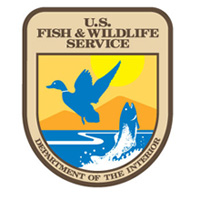Draft Environmental Impact Statement Open for Public Comment Until Sep. 30, 2013
For Immediate Release
Date: August 16, 2013
Contact: Doug Cordell, (510) 774-4080, doug_cordell@fws.gov
FREMONT, CA – The U.S. Fish and Wildlife Service (the Service) published a draft Environmental Impact Statement (EIS) today for its South Farallon Islands Invasive House Mouse Eradication Project, proposing alternatives for addressing the pervasive threat that invasive house mice pose to wildlife on one of the world’s most important seabird habitats. The draft EIS is open for public comment until September 30, 2013, and a public meeting will be held on August 29, 2013.
“Invasive house mice are taking a serious toll on the seabirds and other wildlife of the Farallon Islands,” said Anne Morkill, manager of the San Francisco Bay National Wildlife Refuge Complex, which includes the Farallon National Wildlife Refuge. “The ecosystem on the islands is out of balance. We want the public to give us feedback on our proposals for eradicating the mice and restoring that balance.”
The draft EIS released today proposes three alternatives: two “action” alternatives for eradication (one involving an aerial broadcast of the rodenticide Brodifacoum; another involving aerial broadcast of the rodenticide Diphacinone) and one “no action” alternative that would maintain the status quo and allow the house mice to remain a threat on the islands. At this stage the Service has not selected a preferred alternative. After receiving public input on the draft alternatives, the Service will publish a final EIS that will designate a preferred alternative. The Service will only move forward with a proposed preferred alternative that, after careful analysis of the environmental effects and consideration of substantive public comments, is considered to have greater long-term benefits than risks for the ecosystem of the Farallones.
The Service developed the draft EIS with the help of two not-for-profit conservation organizations contracted for the effort: Island Conservation and Point Blue Conservation Science (formerly PRBO Conservation Science). Input was also received during an extensive scoping period from members of the public, other non-governmental organizations and several local, state and federal government agencies. The more than 700-page document includes a comprehensive analysis of 49 “action” alternatives the Service initially evaluated for removal of invasive mice from the Farallon Islands and explains why all but two of those were dismissed. Also included in the draft EIS are reports from various studies documenting the considerable damage non-native house mice are doing to the native wildlife and sensitive habitats of the Farallones; and evaluations of the potential for eradication success, the risk to non-target species, and methods to minimize that risk.
Copies of the draft EIS and supporting materials can be obtained from:
- Internet: go to http://www.regulations.gov. In the Search box enter FWS-R8-NWRS-2013-0036, the docket number for the document. On the left side of the screen, under Document Type, click on Notices to locate the document.
- In person (copies to view only):
- San Francisco Public Library, 100 Larkin Street, San Francisco, CA 94102
- San Francisco Bay National Wildlife Refuge Complex, 1 Marshlands Road, Fremont, CA 94555 (Phone: 510-792-0222)
Written comments can be submitted by one of the following methods:
- Electronically: follow the directions above to locate the document on http://www.regulations.govand submit a comment.
- By hard copy: Submit by U.S. mail or hand-delivery to: Public Comments Processing, Attn: FWS-R8-NWRS-2013: Division of Policy and Directives Management; U.S. Fish and Wildlife Service; 4401 N. Fairfax Drive, MS 2042-PDM; Arlington, VA 22203.
The public meeting will be held Thursday, Aug. 29, 2013 from 6pm-8pm in the General’s Residence at Fort Mason in San Francisco. For directions go to: http://www.fortmason.org/aboutus/visitor-information/directions
The Farallon Islands comprise four groups of small islands located about 30 miles west of San Francisco. Together, they constitute the Farallon National Wildlife Refuge, administered by the Service. The islands host the largest seabird breeding colony in the United States outside of Alaska and Hawai`i. Twenty-five percent of California’s breeding seabirds—an estimated 200,000 to 300,000 individuals of 13 species—can be found there. About 50% of the world’s population of the rare ashy storm-petrel (listed as a Species of Management Concern by the U.S. Fish and Wildlife Service and a Bird Species of Special Concern by the California Department of Fish and Wildlife) breed on the islands.
Unfortunately, the presence of non-native, invasive house mice—introduced to the islands by human travelers as far back as the 19th century—threatens this globally significant seabird colony, attracting wintering burrowing owls that feed extensively on the rare ashy storm-petrels. The mice also feed to a considerable extent on native invertebrates, reducing their populations and competing for food with endemic Farallon arboreal salamanders and other native species. In addition, the mice are thought to reduce native plant populations by feeding on their seeds.
The eradication of invasive rodents has been successfully completed on over 500 islands worldwide, including California’s Anacapa Island in the Channel Islands National Park, three National Wildlife Refuges in the Pacific, two islands off the coast of Mexico, many islands off the main islands of New Zealand, and more recently, several islands in the Galápagos Archipelago. Land managers have successfully eradicated house mice, specifically, from more than 43 islands worldwide. For more information on the Farallon mouse eradication project, go to: www.restorethefarallones.org
Click on the icons below to download photos in high resolution.
























Restore the Farallones, a set on Flickr.
The mission of the U.S. Fish and Wildlife Service is working with others to conserve, protect and enhance fish, wildlife, plants and their habitats for the continuing benefit of the American people. We are both a leader and trusted partner in fish and wildlife conservation, known for our scientific excellence, stewardship of lands and natural resources, and commitment to public service. For more information on our work and the people who make it happen, visit www.fws.gov ###

